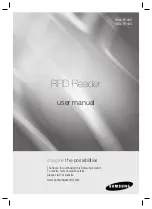
ENGINEERING MANUAL OF AUTOMATIC CONTROL
CONTROL FUNDAMENTALS
12
COOLING EQUIPMENT
An air handling system cools by moving air across a coil
containing a cooling medium (e.g., chilled water or a
refrigerant). Figures 10 and 11 show air handling systems that
use a chilled water coil and a refrigeration evaporator (direct
expansion) coil, respectively. Chilled water control is usually
proportional, whereas control of an evaporator coil is two-
position. In direct expansion systems having more than one
coil, a thermostat controls a solenoid valve for each coil and
the compressor is cycled by a refrigerant pressure control. This
type of system is called a “pump down” system. Pump down
may be used for systems having only one coil, but more often
the compressor is controlled directly by the thermostat.
Fig. 10. System Using Cooling Coil.
Fig. 11. System Using Evaporator
(Direct Expansion) Coil.
Two basic types of cooling systems are available: chillers,
typically used in larger systems, and direct expansion (DX)
coils, typically used in smaller systems. In a chiller, the
refrigeration system cools water which is then pumped to coils
in the central air handling system or to the coils of fan coil
units, a zone system, or other type of cooling system. In a DX
system, the DX coil of the refrigeration system is located in
the duct of the air handling system. Condenser cooling for
chillers may be air or water (using a cooling tower), while DX
systems are typically air cooled. Because water cooling is more
efficient than air cooling, large chillers are always water cooled.
Compressors for chilled water systems are usually centrifugal,
reciprocating, or screw type. The capacities of centrifugal and
screw-type compressors can be controlled by varying the
volume of refrigerant or controlling the compressor speed. DX
system compressors are usually reciprocating and, in some
systems, capacity can be controlled by unloading cylinders.
Absorption refrigeration systems, which use heat energy directly
to produce chilled water, are sometimes used for large chilled
water systems.
While heat pumps are usually direct expansion, a large heat
pump may be in the form of a chiller. Air is typically the heat
source and heat sink unless a large water reservoir (e.g., ground
water) is available.
Initial and operating costs are prime factors in selecting
cooling equipment. DX systems can be less expensive than
chillers. However, because a DX system is inherently two-
position (on/off), it cannot control temperature with the accuracy
of a chilled water system. Low-temperature control is essential
in a DX system used with a variable air volume system.
For more information control of various system equipment,
refer to the following sections of this manual:
— Chiller, Boiler, and Distribution System
Control Applications.
— Air Handling System Control Applications.
— Individual Room Control Applications.
DEHUMIDIFICATION
Air that is too humid can cause problems such as condensation
and physical discomfort. Dehumidification methods circulate
moist air through cooling coils or sorption units.
Dehumidification is required only during the cooling season.
In those applications, the cooling system can be designed to
provide dehumidification as well as cooling.
For dehumidification, a cooling coil must have a capacity
and surface temperature sufficient to cool the air below its dew
point. Cooling the air condenses water, which is then collected
and drained away. When humidity is critical and the cooling
system is used for dehumidification, the dehumidified air may
be reheated to maintain the desired space temperature.
When cooling coils cannot reduce moisture content
sufficiently, sorption units are installed. A sorption unit uses
either a rotating granular bed of silica gel, activated alumina or
hygroscopic salts (Fig. 12), or a spray of lithium chloride brine
or glycol solution. In both types, the sorbent material absorbs
moisture from the air and then the saturated sorbent material
passes through a separate section of the unit that applies heat
to remove moisture. The sorbent material gives up moisture to
a stream of “scavenger” air, which is then exhausted. Scavenger
air is often exhaust air or could be outdoor air.
TEMPERATURE
CONTROLLER
SENSOR
CONTROL
VALVE
CHILLED
WATER
SUPPLY
CHILLED
WATER
COIL
COOL AIR
CHILLED
WATER
RETURN
C2707-2
D
X
TEMPERATURE
CONTROLLER
SENSOR
COOL AIR
C2708-1
EVAPORATOR
COIL
SOLENOID
VALVE
REFRIGERANT
LIQUID
REFRIGERANT
GAS
Summary of Contents for AUTOMATIC CONTROL SI Edition
Page 1: ...AUTOMATIC CONTROL for ENGINEERING MANUAL of COMMERCIAL BUILDINGS SI Edition ...
Page 4: ...ENGINEERING MANUAL OF AUTOMATIC CONTROL iv ...
Page 6: ...ENGINEERING MANUAL OF AUTOMATIC CONTROL vi ...
Page 46: ...ENGINEERING MANUAL OF AUTOMATIC CONTROL CONTROL FUNDAMENTALS 36 ...
Page 66: ...ENGINEERING MANUAL OF AUTOMATIC CONTROL PSYCHROMETRIC CHART FUNDAMENTALS 56 ...
Page 128: ...ENGINEERING MANUAL OF AUTOMATIC CONTROL ELECTRIC CONTROL FUNDAMENTALS 118 ...
Page 158: ...MICROPROCESSOR BASED DDC FUNDAMENTALS 148 ENGINEERING MANUAL OF AUTOMATIC CONTROL ...
Page 208: ...ENGINEERING MANUAL OF AUTOMATIC CONTROL BUILDING MANAGEMENT SYSTEM FUNDAMENTALS 198 ...
Page 493: ...INDEX ENGINEERING MANUAL OF AUTOMATIC CONTROL 483 INDEX ...
Page 506: ...ENGINEERING MANUAL OF AUTOMATIC CONTROL INDEX 496 NOTES ...
Page 507: ...INDEX ENGINEERING MANUAL OF AUTOMATIC CONTROL 497 NOTES ...
Page 508: ...ENGINEERING MANUAL OF AUTOMATIC CONTROL INDEX 498 NOTES ...
Page 509: ...INDEX ENGINEERING MANUAL OF AUTOMATIC CONTROL 499 NOTES ...
Page 510: ...ENGINEERING MANUAL OF AUTOMATIC CONTROL INDEX 500 NOTES ...
Page 511: ...INDEX ENGINEERING MANUAL OF AUTOMATIC CONTROL 501 NOTES ...
Page 512: ...ENGINEERING MANUAL OF AUTOMATIC CONTROL INDEX 502 NOTES ...
















































